In everyday life, we find various sources of infrared radiation. They can be both a natural phenomenon and the result of human activity. Half of the sun's radiation is infrared. This kind of rays is invisible to the human eye. But there are different types of animals whose vision is susceptible to such radiation, which allows them to navigate in the dark. A person can feel it with his skin in the form of heat.
These electromagnetic waves are also called heat waves. This is because heat is generated during this radiation. It is on the basis of this phenomenon that various meters work, including a thermal imager. It measures the difference in radiation, which also corresponds to the difference in temperature between different objects.
Such radiation can be divided into:
- Longwave;
- Medium wave;
- Shortwave.
In this case, the wavelength depends on what temperature the source itself emits. The higher the temperature, the shorter the radiation wave will be, but at the same time it will be more intense. For the human body, short-wave radiation is considered the most dangerous. The temperature of such radiation exceeds 800 degrees Celsius.
Solids are the source of this type of radiation and generate long-wave infrared radiation. The higher the temperature, the brighter the object will appear. So at temperatures above 5 thousand Kelvin, the color of the object becomes completely white, and at lower rates, it can reach dark red. This phenomenon can be noticed when heating various objects. For example, when a metal wire is heated, it changes its color, which indicates an increase in temperature. But as much as possible at home, you can get only a rich red color, because there are no suitable conditions for a subsequent increase in temperature.
A person often uses infrared radiation for his needs. You need to know what it is, in what doses it is safe for humans and what consequences it can cause. Also, infrared rays can be natural. Sunlight is such radiation. Depending on the dose, it can be both beneficial to humans and cause many problems, often including sunburn.
Discovery history
In 1800, a scientist from England W. Herschel made the observation that in the invisible part of the solar spectrum (outside the red light), the temperature of the thermometer rises. Subsequently, the subordination of infrared radiation to the laws of optics was proved and a conclusion was made about its relationship with visible light.
Thanks to the works of the Soviet physicist A.A.Glagoleva-Arkadyeva, who in 1923 received radio waves with λ = 80 μm (infrared range), the existence of a continuous transition from visible radiation to infrared radiation and radio wave was experimentally proved. Thus, a conclusion was drawn about their general electromagnetic nature.
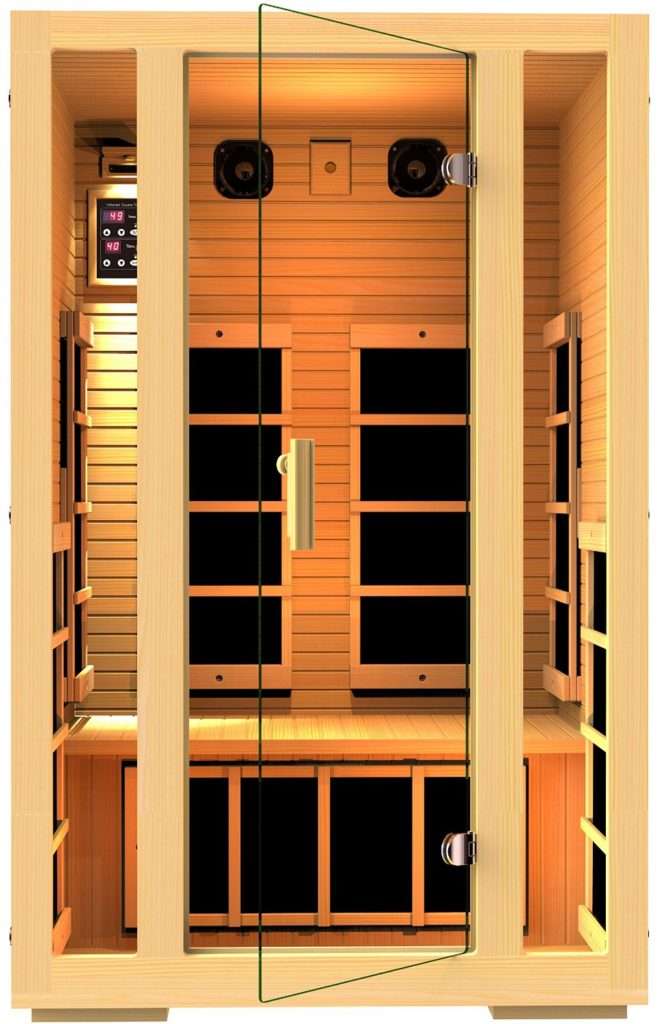
Almost everything in nature is capable of emitting wavelengths corresponding to the infrared spectrum, which means it is a source of infrared radiation. The human body is no exception. We all know that everything around is made of atoms and ions, even a person. And these excited particles are capable of emitting line IR spectra. They can pass into an excited state under the influence of various factors, for example, electrical discharges or when heated.So, in the emission spectrum of a gas stove flame there is a band with λ = 2.7 μm from water molecules and with λ = 4.2 μm from carbon dioxide.
IR waves in everyday life, science and industry
Using certain devices at home and at work, we rarely ask ourselves about the effect of infrared radiation on the human body. Meanwhile, infrared heaters are quite popular today. Their principal difference from oil radiators and convectors is the ability to heat not the air itself directly, but all objects in the room. That is, furniture, floors and walls are heated first, and then they give up their heat to the atmosphere. At the same time, infrared radiation has an effect on organisms - a person and his pets.
Infrared beams are also widely used for data transmission and remote control. Many mobile phones have infrared ports for exchanging files between them. And all remotes from air conditioners, music centers, televisions, some controlled children's toys also use electromagnetic rays in the infrared range.
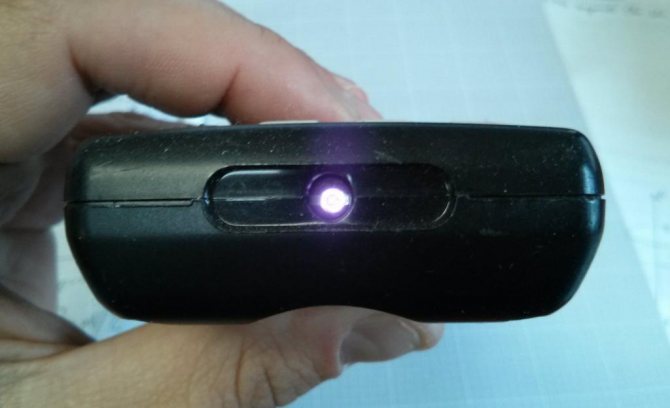

Influence of infrared radiation on the human body
The deliberate use of the properties of infrared rays benefits the human body. Here are examples of how they contribute to overall health benefits:
- The rays help to destroy disease-causing bacteria, thereby helping in the fight against colds.
- Infrared rays strengthen the immune system of children and adults.
- Also, doctors noted their benefits for the skin. By increasing the blood flow, it is easier for the skin to receive the necessary substances, as a result of which it becomes more toned.
- The cosmetic effect of the rays for the skin is unlimited. Numerous studies show that they help heal skin conditions such as urticaria, psoriasis, dermatitis.
- The saturation of the enclosed space with infrared radiation helps to reduce the harm from dust to the human body.
The use of infrared rays in the army and astronautics
Infrared rays are most important for the aerospace and military industries. On the basis of photocathodes that are sensitive to infrared radiation (up to 1.3 microns), night vision devices (various binoculars, sights, etc.) are created. They allow, while simultaneously irradiating objects with infrared radiation, aiming or observing in absolute darkness.
Thanks to the created highly sensitive receivers of infrared rays, it became possible to produce homing missiles. Sensors in their warheads react to infrared radiation from a target, the temperature of which, as a rule, is higher than the environment, and direct the missile towards the target. The same principle is used to detect heated parts of ships, aircraft and tanks with the help of heat direction finders.
IR locators and rangefinders can detect various objects in complete darkness and measure the distance to them. Special devices - optical quantum generators, which emit in the infrared region, are used for space and long-distance terrestrial communications.
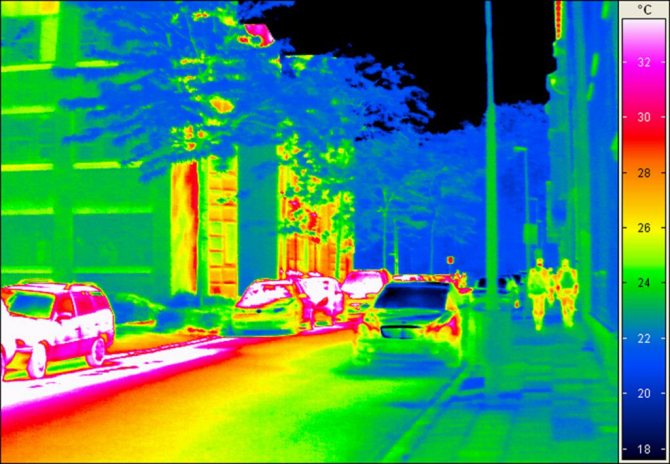

Infrared radiation in scientific activities
One of the most common is the study of emission and absorption spectra in the infrared region. It is used to study the features of the electronic shells of atoms, to determine the structures of all kinds of molecules, and, in addition, in the qualitative and quantitative analysis of mixtures of various substances.
Due to the differences in the scattering, transmittance and reflection of bodies in visible and infrared rays, photographs taken under different conditions are slightly different. Infrared images often show more detail. Such images are widely used in astronomy.
Study of the influence of infrared rays on the body
The first scientific data on the influence of infrared radiation on the human body dates back to the 1960s. The author of the research is the Japanese physician Tadashi Ishikawa. In the course of his experiments, he was able to establish that infrared rays tend to penetrate deep into the human body. In this case, thermoregulation processes occur, similar to the reaction to being in a sauna. However, sweating begins at a lower ambient temperature (it is about 50 ° C), and the internal organs are warmed up much deeper.
In the course of such heating, blood circulation increases, the vessels of the respiratory system, subcutaneous tissue and skin expand. At the same time, prolonged exposure to infrared radiation on a person can cause heatstroke, and strong infrared radiation leads to burns of varying degrees.
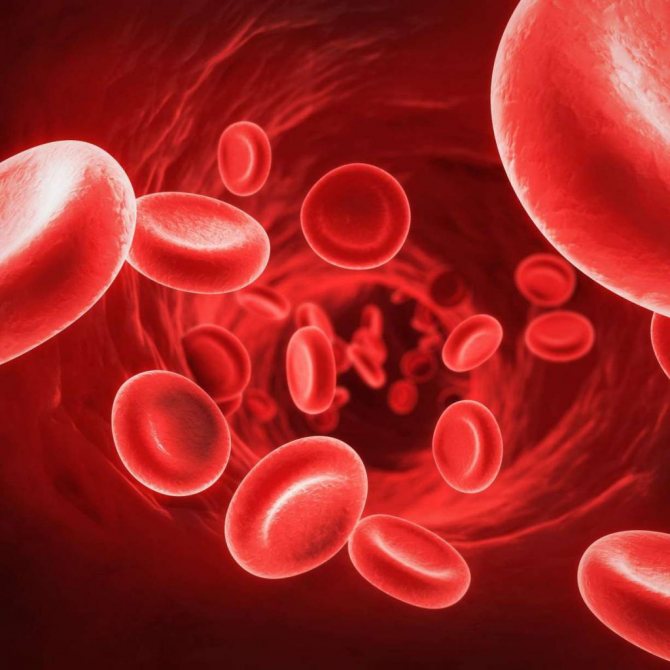

The benefits of infrared heaters
IR heaters also have a number of useful properties, and it is thanks to them that they are often used in medicine.
Among the positive effects on a person can be distinguished:
- Providing a positive effect on metabolic processes and the circulatory system.
- Beneficial effect on the immune system.
- Acceleration of recovery processes in damaged tissues, healing and regeneration of many internal organs.
- Reduces the growth of cancer cells in the human body.
- Helps kill some types of hepatitis viruses.
- Providing help for diseases such as psoriasis or cirrhosis of the liver.
- Neutralization of harmful radioactive types of radiation received by humans.
Infrared radiation today is actively used in various areas of medicine - dentistry, surgery, physiotherapy. Many doctors also advise in some cases to take infrared saunas or infrared baths, which have a beneficial effect on human health in general.
IR protection
There is a small list of measures aimed at reducing the risk of exposure to infrared radiation on the human body:
- Decrease in radiation intensity. It is achieved through the selection of appropriate technological equipment, timely replacement of outdated equipment, as well as its rational layout.
- Removing workers from the radiation source. If the production line permits, remote control of it should be preferred.
- Installation of protective screens at the source or workplace. Such fences can be arranged in two ways to reduce the effect of infrared radiation on the human body. In the first case, they must reflect electromagnetic waves, and in the second, they must stop them and convert the radiation energy into heat with its subsequent removal. Due to the fact that protective screens should not deprive specialists of the opportunity to monitor processes occurring in production, they can be made transparent or translucent. For this, silicate or quartz glasses, as well as metal nets and chains, are chosen as materials.
- Thermal insulation or cooling of hot surfaces. The main purpose of thermal insulation is to reduce the risk of workers getting various burns.
- Personal protective equipment (various overalls, glasses with built-in light filters, shields).
- Preventive actions. If, in the course of the above actions, the level of exposure to infrared radiation on the body remains high enough, then an appropriate mode of work and rest should be selected.
How to avoid harmful effects of infrared rays
Since we have determined that short-wave infrared radiation has a negative effect on the human body, we will find out where this danger can lie in wait for us.
First of all, these are bodies with temperatures exceeding 100 ° C. These may be the following.
- Industrial sources of radiant energy (steelmaking, electric arc furnaces, etc.) Reducing the risk of their exposure is achieved by special protective clothing, heat shields, the use of newer technologies, as well as medical and preventive measures for service personnel;
- Heaters. The most reliable and proven of them is the Russian stove. The heat it radiates is not only extremely pleasant, but also curative. Unfortunately, this detail of everyday life has almost completely sunk into oblivion. It was replaced by all possible electric heaters. Those of them, whose heat-generating coil is protected by a heat-insulating material, emit soft long-wave radiation. It has a beneficial effect on the body. Heaters with an open heating element emit hard, short-wave radiation, which can lead to the negative consequences described above. In the technical passport of the heater, the manufacturer is obliged to indicate the nature of the radiation of this device.


If you become the owner of a short-wave heater, follow the rule - the closer the heater is, the shorter its exposure time should be.
Benefits for the human body
Infrared radiation affecting the human body leads to improved blood circulation due to vasodilation, better saturation of organs and tissues with oxygen. In addition, an increase in body temperature has an analgesic effect due to the effect of rays on the nerve endings in the skin.
It has been observed that surgical procedures performed under the influence of infrared radiation have a number of advantages:
- pain after surgery is somewhat easier;
- cell regeneration is faster;
- the influence of infrared radiation on a person avoids cooling of internal organs in the case of an operation on open cavities, which reduces the risk of shock.
In patients with burns, infrared radiation makes it possible to remove necrosis, as well as perform autoplasty at an earlier stage. In addition, the duration of fever decreases, anemia and hypoproteinemia are less pronounced, and the frequency of complications decreases.
It has been proven that infrared radiation can weaken the effect of some pesticides by increasing nonspecific immunity. Many of us know about the treatment of rhinitis and some other manifestations of the common cold with blue IR lamps.


Infrared rays: benefits and harms
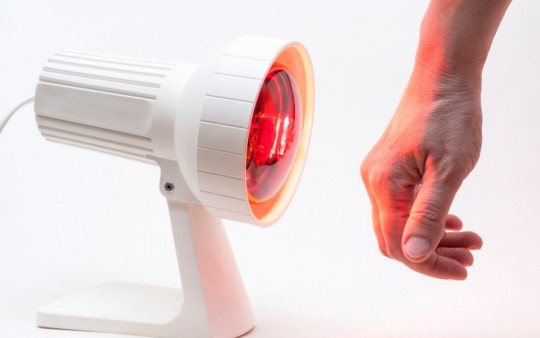

In various spheres of life, a person uses infrared rays. The benefits and harms of radiation depend on the wavelength and time of exposure.
In everyday life, a person is constantly exposed to infrared radiation (IR radiation). Its natural source is the sun. The artificial ones include electric heating elements and incandescent lamps, any heated or incandescent bodies. This type of radiation is used in heaters, heating systems, night vision devices, remote controls. The principle of operation of medical equipment for physiotherapy is based on infrared radiation. What are infrared rays? What are the benefits and harms of this type of radiation?
What is IR radiation
IR radiation is electromagnetic radiation, a form of energy that heats objects and is adjacent to the red spectrum of visible light. The human eye does not see in this spectrum, but we feel this energy as heat. In other words, people perceive infrared radiation from heated objects on their skin as a sensation of warmth.
Infrared rays are available in shortwave, mediumwave and longwave. The wavelengths emitted by a heated object depend on the heating temperature. The higher it is, the shorter the wavelength and the more intense the radiation.
For the first time, the biological effect of this type of radiation was studied on the example of cell cultures, plants, animals. It was found that under the influence of infrared rays the development of microflora is suppressed, metabolic processes are improved due to the activation of blood flow. This radiation has been proven to improve blood circulation and has an analgesic and anti-inflammatory effect. It was noted that under the influence of infrared radiation, patients after surgery more easily endure postoperative pain, and their wounds heal faster. It was found that infrared radiation contributes to an increase in nonspecific immunity, which makes it possible to reduce the effect of pesticides and gamma radiation, and also accelerates the process of recovery from influenza. Infrared rays stimulate the elimination of cholesterol, toxins and other harmful substances from the body through sweat and urine.
The benefits of infrared rays
Due to these properties, infrared radiation is widely used in medicine. But the use of infrared radiation with a wide spectrum of action can lead to overheating of the body and reddening of the skin. At the same time, long-wave radiation does not have a negative effect, therefore, in everyday life and medicine, long-wave devices or emitters with a selective wavelength are more common.
Exposure to long-wave infrared rays contributes to the following processes in the body:
- Normalization of blood pressure by stimulating blood circulation
- Improving cerebral circulation and memory
- Cleansing the body of toxins, heavy metal salts
- Normalization of hormonal levels
- Stopping the spread of harmful microbes and fungi
- Restoration of water-salt balance
- Pain relief and anti-inflammatory effect
- Strengthening the immune system.
The therapeutic effect of infrared rays can be used for the following diseases and conditions:
- bronchial asthma and exacerbation of chronic bronchitis
- focal pneumonia in resolution
- chronic gastroduodenitis
- hypermotor dyskinesia of the digestive system
- chronic acalculous cholecystitis
- osteochondrosis of the spine with neurological manifestations
- rheumatoid arthritis in remission
- exacerbation of deforming osteoarthritis of the hip and knee joints
- obliterating atherosclerosis of the vessels of the legs, neuropathy of the peripheral nerves of the legs
- exacerbation of chronic cystitis
- urolithiasis disease
- exacerbation of chronic prostatitis with impaired potency
- infectious, alcoholic, diabetic polyneuropathies of the legs
- chronic adnexitis and ovarian dysfunction
- withdrawal symptoms
Heating using infrared radiation helps to strengthen the immune system, suppresses the growth of bacteria in the environment and in the human body, improves the condition of the skin by increasing blood circulation in it. Air ionization is the prevention of allergy exacerbations.
When infrared radiation can harm
First of all, you need to take into account the existing contraindications before using infrared rays for therapeutic purposes. The harm from their use can be in the following cases:
- Acute purulent diseases
- Bleeding
- Acute inflammatory diseases leading to decompensation of organs and systems
- Systemic blood diseases
- Malignant neoplasms
In addition, excessive exposure to a wide range of infrared rays causes severe redness of the skin and can cause burns. It is known about cases of the appearance of a tumor on the face of metallurgical workers as a result of prolonged exposure to this type of radiation. Cases of dermatitis and heatstroke have also been reported.
Infrared rays, especially in the range 0.76 - 1.5 µm (shortwave), are hazardous to the eyes. Prolonged and prolonged exposure to radiation is fraught with the development of cataracts, photophobia and other visual impairments.For this reason, it is undesirable to be under the influence of short-wave heaters for a long time. The closer a person is to such a heater, the less time he spends near this device should be. It should be noted that this type of heater is intended for outdoor or local heating. Long-wave infrared heaters are used to heat residential and industrial premises intended for long-term stay of people.
Harm to humans
It is worth noting that the harm from infrared radiation for the human body can also be very significant. The most obvious and common cases are skin burns and dermatitis. They can occur either with too long exposure to weak waves of the infrared spectrum, or during intense irradiation. If we talk about medical procedures, then rarely, but still there are heatstrokes, asthenia and exacerbation of pain with improper treatment.
Eye burns are one of the modern problems. The most dangerous for them are infrared rays with wavelengths in the range of 0.76-1.5 microns. Under their influence, the lens and aqueous humor are heated, which can lead to various disorders. Photophobia is one of the most common consequences. This is something to keep in mind for children playing with laser pointers and welders who neglect personal protective equipment.
How Safe Are IR Heaters


Options for the location of heating devices in rooms of different types and sizes.
The harm of infrared heaters to humans is exaggerated. Correct selection of infrared equipment and ensuring correct operation will allow to neutralize harm and even reduce it to zero.... For example, the same uranium mines, subject to the strictest operational requirements, are practically harmless to the people working there. The same applies to infrared radiation.
By the way, the word "radiation" affects people like a loaded pistol - many, having heard this word, perceive it as an element of danger. In this case, the most common light that a light bulb emits is also radiation. Another type of radiation is radio waves - this electromagnetic radiation causes radio receivers to talk, and televisions to show us an image.
This is not to say that infrared radiation is absolutely harmless. If you wish, you can harm your body with the help of the most harmless things and objects. The same oranges or chicken eggs, if consumed in unthinkable quantities, can cause a person a lot of suffering and trouble. Therefore, when assessing the harm from infrared heaters, you need to focus on the correct selection of equipment and compliance with the operating rules.
Infrared heaters - the harm and benefits of them can be very different. Let's see how the benefits are achieved and under what conditions they become harmful:


Calculation of the correct location of the ceiling IR device, depending on its power.
- the correct selection of heaters for the volume of the room will provide benefits and prevent headaches. If there is an "overkill" in power, it will not be possible to avoid harmful effects;
- the correct choice of heaters by wavelength - short-wave models are focused on outdoor use. Indoors, their effect leads to a kind of burns, headaches and other troubles. Long-wave heaters should be used for space heating. (the best option for a person);
- correct operation in time - long-term operation of such devices can be harmful, so you need to know when to stop;
- location of heaters - in order to neutralize the harm of infrared heaters, it is advisable to arrange them so that they warm up the surrounding objects. You also need to maintain a distance from the heaters to people.
It should be borne in mind that IR devices provide protection against many pathogenic bacteria - this is already a benefit, not a harm. They also warm the skin well and are used to treat certain diseases.
Nevertheless, staying near infrared heaters for a long time is harmful - the skin dries out, the head starts to hurt, and unpleasant sensations appear.
Infrared rays in medicine
Treatment with infrared radiation is local and general. In the first case, a local action is carried out on a certain part of the body, and in the second case, the entire body is exposed to the action of rays. The course of treatment depends on the disease and can range from 5 to 20 sessions, 15-30 minutes each. When carrying out procedures, a prerequisite is the use of protective equipment. To preserve the health of the eyes, special cardboard covers or glasses are used.
After the first procedure, redness with indistinct boundaries appears on the surface of the skin, passing in about an hour.
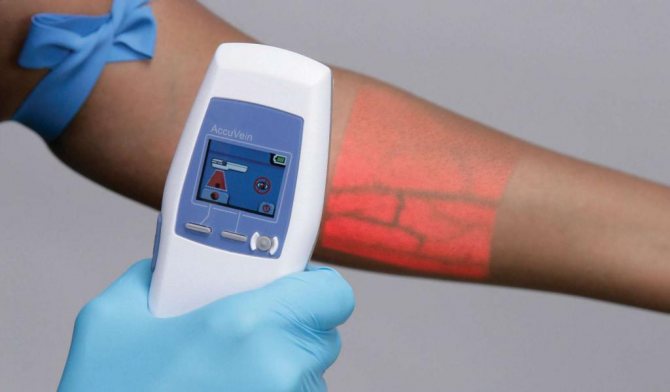

Infrared radiation treatment
Thus, the benefits of infrared radiation for humans are achieved through the following mechanism:
- The heat coming from the rays triggers and accelerates biochemical reactions.
- First of all, the intensification of the processes of tissue regeneration begins, the network of vessels becomes wider, the blood flow accelerates.
- As a result, the growth of healthy cells becomes more and more intensive, plus everything in the body begins to independently produce biologically active substances.
- All this lowers blood pressure due to better blood supply, thereby achieving muscle relaxation.
- Easy access of white blood cells to the foci of inflammation is provided. This leads to the strengthening of the immune system and the strengthening of the protective functions of the body in the fight against various diseases.
Recommended reading: The benefits and harms of riding a scooter
It is thanks to such special properties that a general strengthening effect for the body is achieved when treating with infrared rays.
During treatment, both the entire body and some of its affected part can be exposed to radiation. The procedures can be carried out up to 2 times a day, and the duration of the session is up to half an hour. The number of treatments depends on the needs of the patient. In order not to harm, during the sessions, it is imperative to protect the eyes and the area around them from the effects of radiation. For this, various methods are used.
Attention! The redness of the skin that appeared on the skin after the procedure will disappear within an hour.
Infrared emitters action
With the availability of many medical devices, people purchase them for individual use. However, it must be remembered that such devices must comply with special requirements and be used in a safe manner. But most importantly, it is important to understand that, like any medical device, infrared emitters cannot be used for a number of diseases.
Influence of infrared radiation on the human body
| Wavelength, μm | Useful action |
| 9.5 μm | Immunocorrective action in immunodeficiency states caused by starvation, poisoning with carbon tetrachloride, the use of immunosuppressants. Leads to the restoration of normal parameters of the cellular link of immunity. |
| 16.25 μm | Antioxidant action. It is carried out due to the formation of free radicals from superoxides and hydroperoxides, and their recombination. |
| 8.2 and 6.4 μm | Antibacterial action and normalization of intestinal microflora due to the influence on the synthesis of prostaglandin hormones, leading to an immunomodulating effect. |
| 22.5 μm | It leads to the translation of many insoluble compounds, such as blood clots and atherosclerotic plaques, into a soluble state, allowing them to be removed from the body. |
Therefore, a qualified specialist, an experienced doctor should select a course of therapy. Depending on the length of the infrared waves emitted, the devices can be used for different purposes.
Contraindications to the use of infrared radiation
The use of infrared radiation as a therapeutic or prophylactic procedure should be avoided in the following cases:
- pregnancy and lactation;
- frequent bleeding;
- purulent processes;
- chronic diseases in the acute stage;
- blood diseases;
- oncological diseases.
This is interesting: Has life turned gray? Give us good habits!
The special properties of infrared radiation in these cases can cause harm to the body, which will aggravate existing diseases. Such treatment will definitely not bring benefits in the presence of such contraindications.















